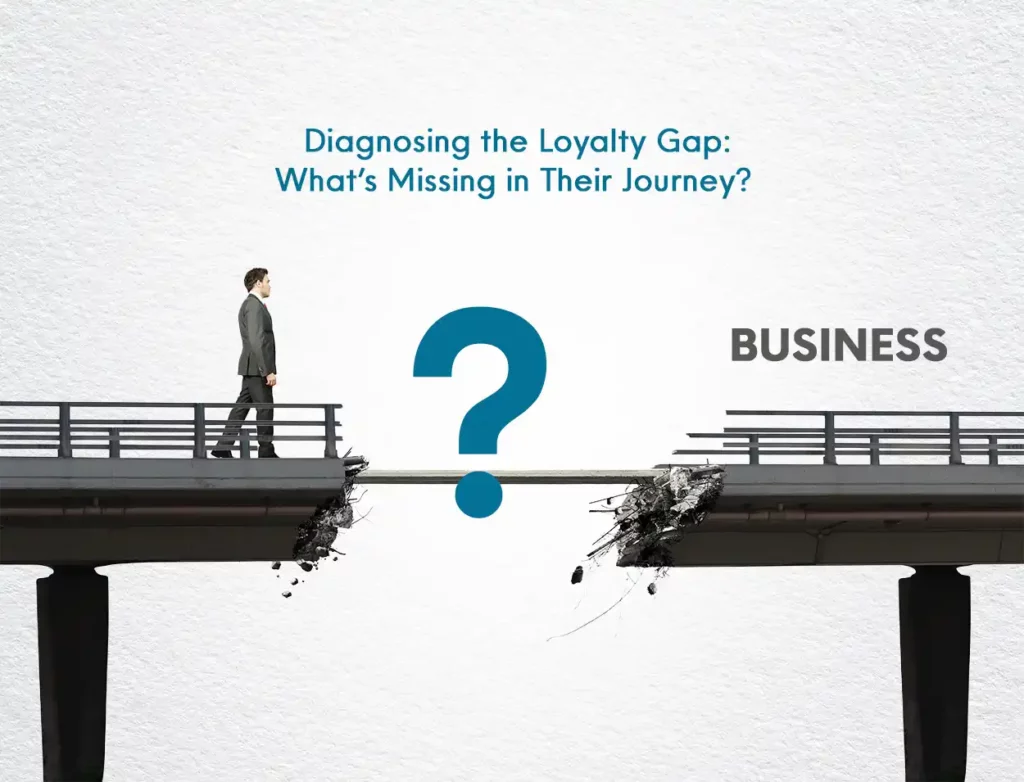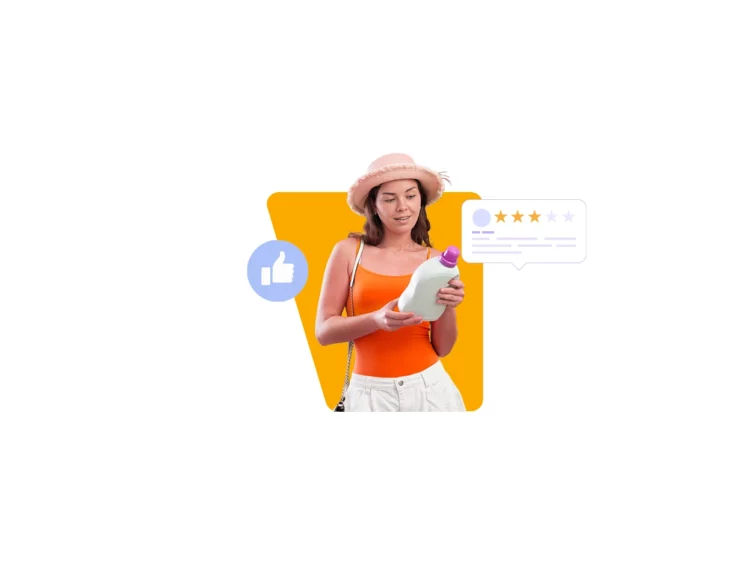In today’s hyper-fragmented and competitive marketplace, most consumers don’t behave like loyalists. They float between price points, platforms, and brands, driven more by convenience or impulse than by commitment. While brands often celebrate their core loyal customers, it’s the casual, uncertain, and experimenting buyers who hold the real key to long-term growth.
These are the customers who’ve engaged with your brand, perhaps just once, but didn’t return. Too often, they’re seen as uncommitted or of low value. But in truth, retaining an occasional buyer is significantly more cost-effective than acquiring a new one. Loyal customers don’t just return, they spend more, engage more, and are more likely to become advocates.
But loyalty isn’t an accident. It’s something that needs to be strategically designed and that design starts with knowing exactly who these occasional buyers are and why they haven’t crossed the threshold into true loyalty.
To do that, brands must move beyond surface-level attributes like demographics, price sensitivity, or promotion responsiveness. Borderless Access’s brand tracking tool uses relationship and affinity segmentation to break this broad group into three strategic cohorts:
- Fringe loyalists: Buyers who use your brand sporadically but lack emotional or functional stickiness—often swayed by better offers or stronger perceptions elsewhere
- Potential loyalists: Non-users who like what your brand represents but haven’t yet converted
- Open consumers: Curious and undecided, likely to try, but unlikely to stay without the right push
Each of these groups reflects a different behavioral mindset and a different barrier to loyalty. Understanding their values, expectations, and readiness to engage helps brands move from passive observation to proactive conversion strategies.
Which brings us to the core question: What’s missing in their journey and how do we bridge that loyalty gap?
Diagnosing the Loyalty Gap: What’s Missing in Their Journey?

Understanding who occasional buyers are is only the first step. The real challenge lies in identifying why they haven’t become loyal and what exactly is missing in their experience with your brand.
To move them forward in their journey, businesses must answer three critical questions:
- What truly motivates them to buy? Is it value for money? Innovation? Trust? Or alignment with lifestyle and identity?
- What’s stopping them from coming back? It could be availability gaps, inconsistent messaging, lack of relevance, or simply stronger offers from competitors.
- How do they see your brand compared to others? Are you perceived as distinct and exciting, or just another option in the mix?
Our brand tracking tool uses importance vs. performance analysis to decode not only which attributes matter most to different buyer segments—but also where your brand underdelivers or overperforms against those expectations
For instance, if fringe loyalists value “high quality” and “fun and exciting” as key brand traits, but your brand scores low on those dimensions, the gap becomes clear. These are not abstract insights. They’re precise, actionable cues to guide brand and communication strategy.
When it comes to measuring brand affinity, this level of depth is critical. It enables businesses to not only understand preference but to act on it—by designing journeys that connect, convert, and retain.
Diagnosing the loyalty gap in this way gives brands a powerful edge: it shifts the approach from reactive to intentional, helping you craft strategies that address real barriers and unlock real potential.
Move Beyond One-Size-Fits-All: Personalizing the Path to Loyalty
In today’s crowded marketplace, a one-size-fits-all approach to loyalty no longer works. Yet many brands continue to rely on generic tracking systems that only scratch the surface, failing to capture the behavioral nuance needed to build meaningful engagement.
The result? Aggregate data that doesn’t distinguish between a one-time buyer who could become loyal and one who’s likely to churn. Without the ability to segment your audience meaningfully, marketing efforts become broad and ineffective: wasting time, resources, and opportunity.
Our brand tracking tool is designed to solve this. It helps you shift from broad assumptions to tailored actions, enabling a more personalized and scalable path to loyalty. Here’s how:
- Segment-Specific Messaging: Align your communication with what truly matters to each group. For instance, speak to health-conscious buyers with “preservative-free” cues, while appealing to digital natives with “innovation-first” positioning.
- Short-Term Wins vs. Long-Term Value: Fringe loyalists might respond to promotional nudges initially, but long-term engagement hinges on brand relevance and emotional resonance. Our tool helps you strike the right balance.
- Precision Media Planning: Mapping media behavior—such as in-store versus digital-first engagement—lets you reach buyers where they’re most likely to notice and respond.
In one example, city- and age-based diagnostics revealed that younger audiences (ages 21–29) in metro cities responded more positively to equity-based messaging, while older demographics were more motivated by price and convenience. These insights allowed the brand to tailor activations by location and mindset—without increasing the budget.
When done right, consumer brand loyalty is not just built—it’s designed. And it starts by understanding what truly drives each customer to stay, engage, and advocate.
It’s not just about talking to your audience. It’s about talking to the right people, in the right way, at the right time. That’s how you turn potential into preference.
From Strategy to Signals: How to Build & Measure Real Loyalty?
Turning occasional buyers into loyal customers isn’t just about flashy campaigns. It’s about thoughtful, insight-led execution. With the right data and segmentation, brands can activate loyalty by following three strategic moves:
1. Identify High-Conversion Segments: Use behavioral and affinity data to pinpoint which groups are most likely to shift from passive interest to active engagement. These are often consumers with moderate brand familiarity and manageable perception gaps.
2. Understand What Drives Them: Dig into the emotional, functional, and contextual triggers that influence behavior. Is it trust? Innovation? Visibility? Lifestyle alignment? Every segment has a different motivational mix.
3. Engage with Precision: Tailor brand experiences—messaging, placement, and activation—to each segment’s values, preferences, and media behavior. It’s not just about speaking louder—it’s about speaking directly.
One real-world example: A travel brand used our brand tracking tool to segment occasional users and personalize outreach. By refining media plans based on under-indexed platforms and segment-specific drivers, they doubled engagement among fringe and open consumers—without increasing spend.
But strategy alone isn’t enough. You also need to measure the right signals to understand whether your approach is building true loyalty.
Repeat purchases are a lagging indicator. What growth-focused teams need are forward-facing metrics—signals that show not just what happened, but where the brand relationship is headed.
Our brand tracking tool helps teams go beyond transaction metrics by tracking:
- Affinity Strength: How emotionally connected is the buyer to your brand?
- Advocacy Potential: Would they recommend you, even if they’re not frequent buyers yet?
- Brand-for-Me Score: Do they see your brand as a fit with their identity, values, or lifestyle?
These signals reveal long-term brand health, especially in categories where switching is easy and attention is short-lived. They help teams refine their strategies, double down on what’s working, and course-correct before loyalty erodes.
The result? A loyalty strategy that’s not just well-designed—but well-informed, well-executed, and built to last.
Designing Loyalty for the New Marketplace
In fast-moving, resource-constrained environments, growth doesn’t come from chasing every consumer—it comes from knowing exactly who to engage, how to reach them, and what to offer.
Here’s what high-performing teams are keeping in mind:
- Not all occasional buyers are equal: Use smart segmentation to distinguish the persuadable from the unreachable.
- Promotions may attract, but only equity retains: Loyalty grows when functional value meets emotional connection.
- Media behavior matters: Consumers respond best when messaging meets them in the right place, at the right time.
- Tailored engagement beats mass targeting: Loyalty is built in the margins—through relevance, consistency, and experience.
But more than anything, loyalty today must be designed, not expected.
In a fragmented, choice-saturated world, brands can no longer afford to treat loyalty as a passive outcome. Occasional buyers may not be your most vocal fans today, but with the right insight and activation, they can become your most valuable advocates tomorrow.
Our brand tracking tool equips teams to do just that from identifying high-potential segments to crafting journeys that turn interest into sustained affinity. Because this isn’t just about tracking what buyers have done, it’s about shaping what they’ll do next.
Let’s stop chasing loyalty. Let’s start designing it together.
Talk to our experts and see how our brand tracking tool can help you design loyalty that lasts.




